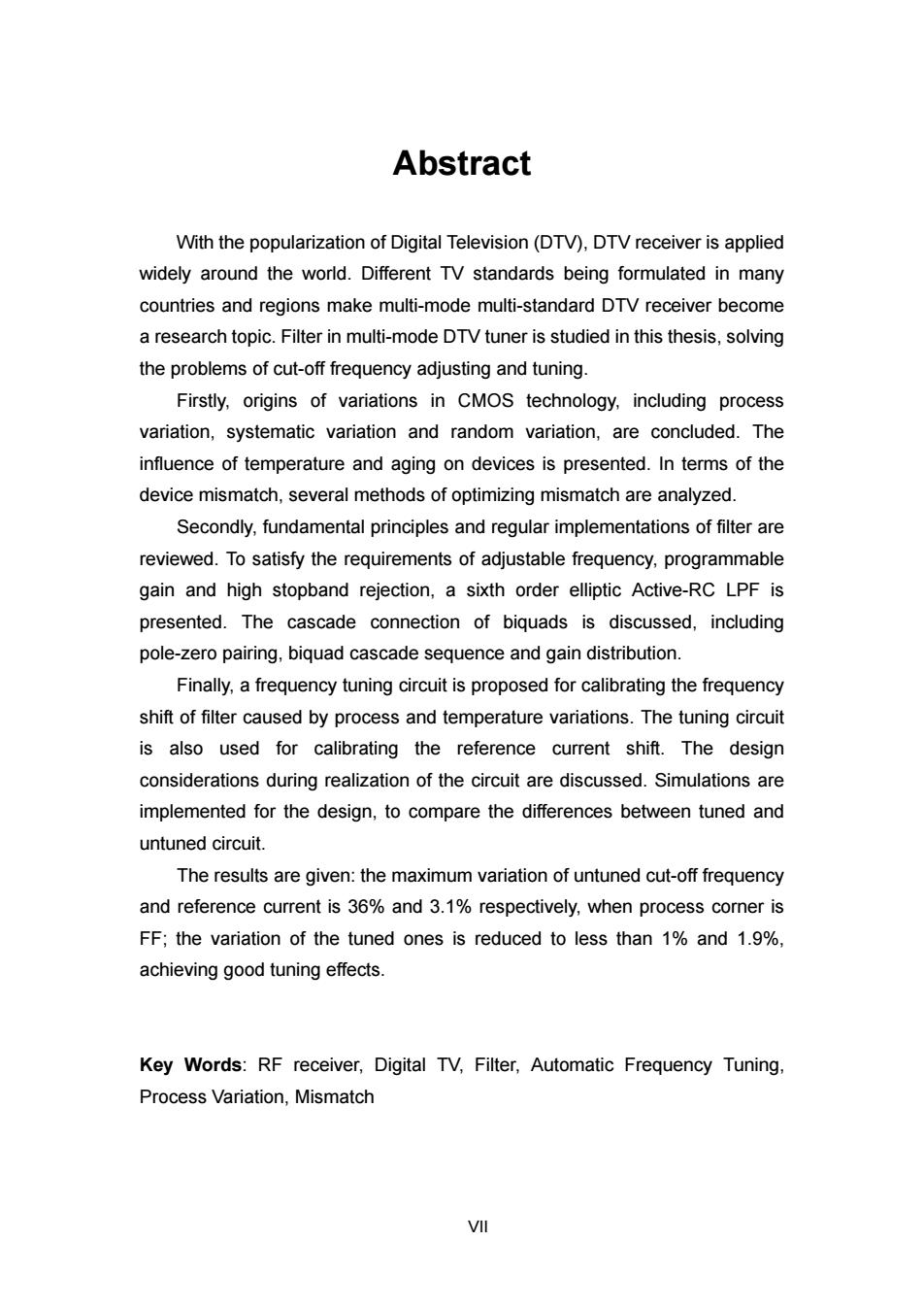正在加载图片...

Abstract With the popularization of Digital Television(DTV),DTV receiver is applied widely around the world.Different TV standards being formulated in many countries and regions make multi-mode multi-standard DTV receiver become a research topic.Filter in multi-mode DTV tuner is studied in this thesis,solving the problems of cut-off frequency adjusting and tuning. Firstly,origins of variations in CMOS technology,including process variation,systematic variation and random variation,are concluded.The influence of temperature and aging on devices is presented.In terms of the device mismatch,several methods of optimizing mismatch are analyzed. Secondly,fundamental principles and regular implementations of filter are reviewed.To satisfy the requirements of adjustable frequency,programmable gain and high stopband rejection,a sixth order elliptic Active-RC LPF is presented.The cascade connection of biquads is discussed,including pole-zero pairing,biquad cascade sequence and gain distribution. Finally,a frequency tuning circuit is proposed for calibrating the frequency shift of filter caused by process and temperature variations.The tuning circuit is also used for calibrating the reference current shift.The design considerations during realization of the circuit are discussed.Simulations are implemented for the design,to compare the differences between tuned and untuned circuit. The results are given:the maximum variation of untuned cut-off frequency and reference current is 36%and 3.1%respectively,when process corner is FF;the variation of the tuned ones is reduced to less than 1%and 1.9%, achieving good tuning effects. Key Words:RF receiver,Digital TV,Filter,Automatic Frequency Tuning, Process Variation,Mismatch VI川VII Abstract With the popularization of Digital Television (DTV), DTV receiver is applied widely around the world. Different TV standards being formulated in many countries and regions make multi-mode multi-standard DTV receiver become a research topic. Filter in multi-mode DTV tuner is studied in this thesis, solving the problems of cut-off frequency adjusting and tuning. Firstly, origins of variations in CMOS technology, including process variation, systematic variation and random variation, are concluded. The influence of temperature and aging on devices is presented. In terms of the device mismatch, several methods of optimizing mismatch are analyzed. Secondly, fundamental principles and regular implementations of filter are reviewed. To satisfy the requirements of adjustable frequency, programmable gain and high stopband rejection, a sixth order elliptic Active-RC LPF is presented. The cascade connection of biquads is discussed, including pole-zero pairing, biquad cascade sequence and gain distribution. Finally, a frequency tuning circuit is proposed for calibrating the frequency shift of filter caused by process and temperature variations. The tuning circuit is also used for calibrating the reference current shift. The design considerations during realization of the circuit are discussed. Simulations are implemented for the design, to compare the differences between tuned and untuned circuit. The results are given: the maximum variation of untuned cut-off frequency and reference current is 36% and 3.1% respectively, when process corner is FF; the variation of the tuned ones is reduced to less than 1% and 1.9%, achieving good tuning effects. Key Words: RF receiver, Digital TV, Filter, Automatic Frequency Tuning, Process Variation, Mismatch